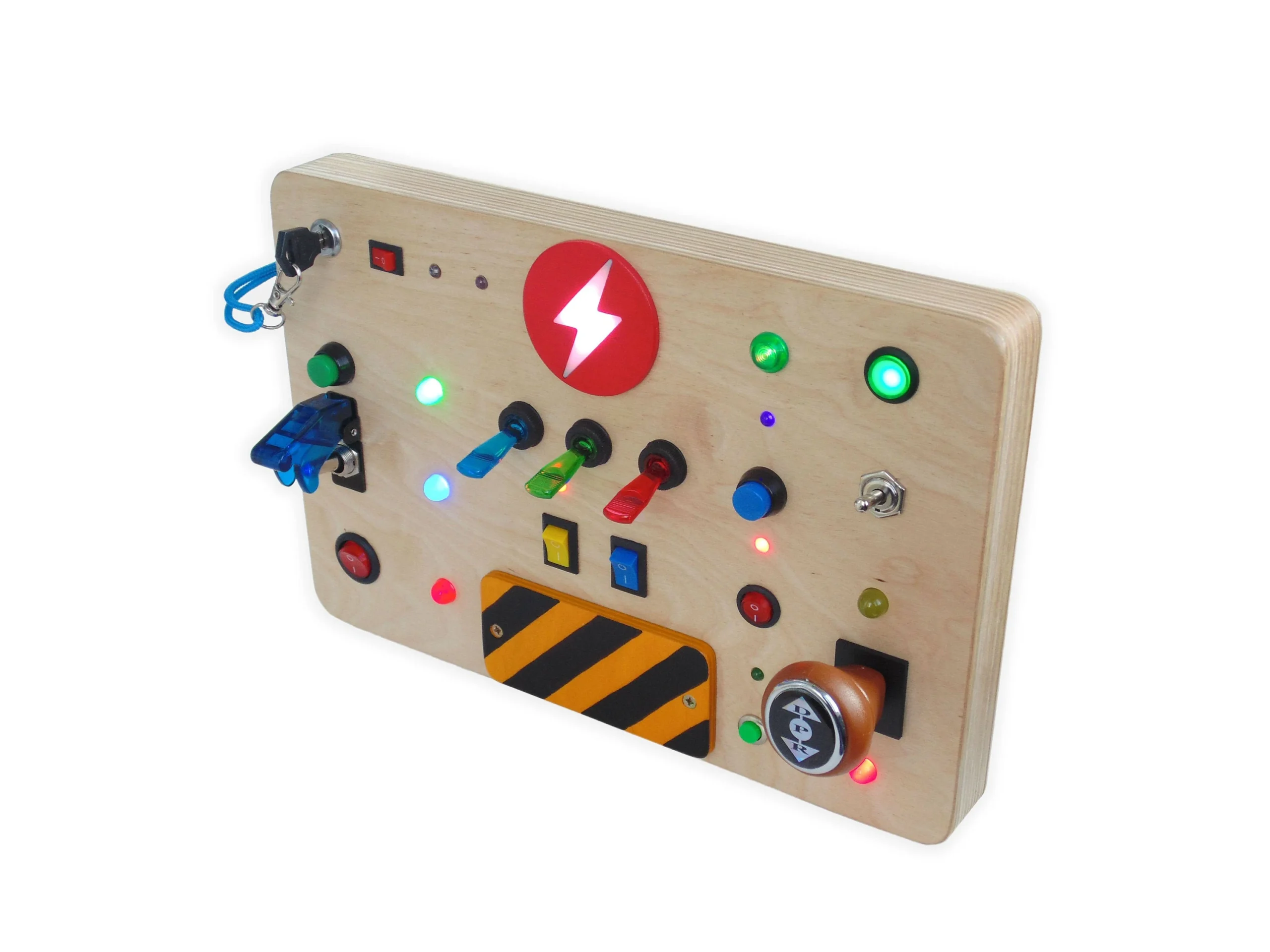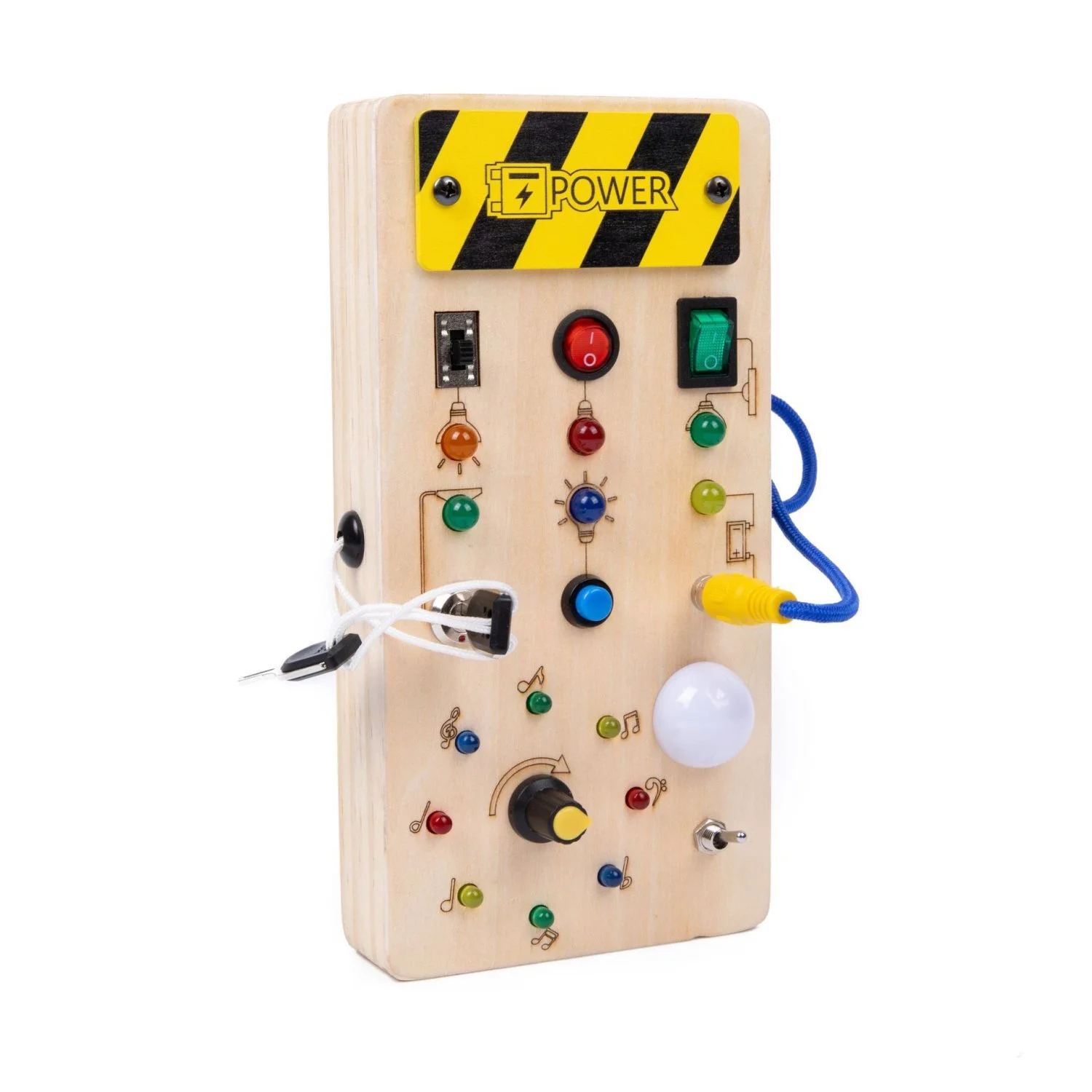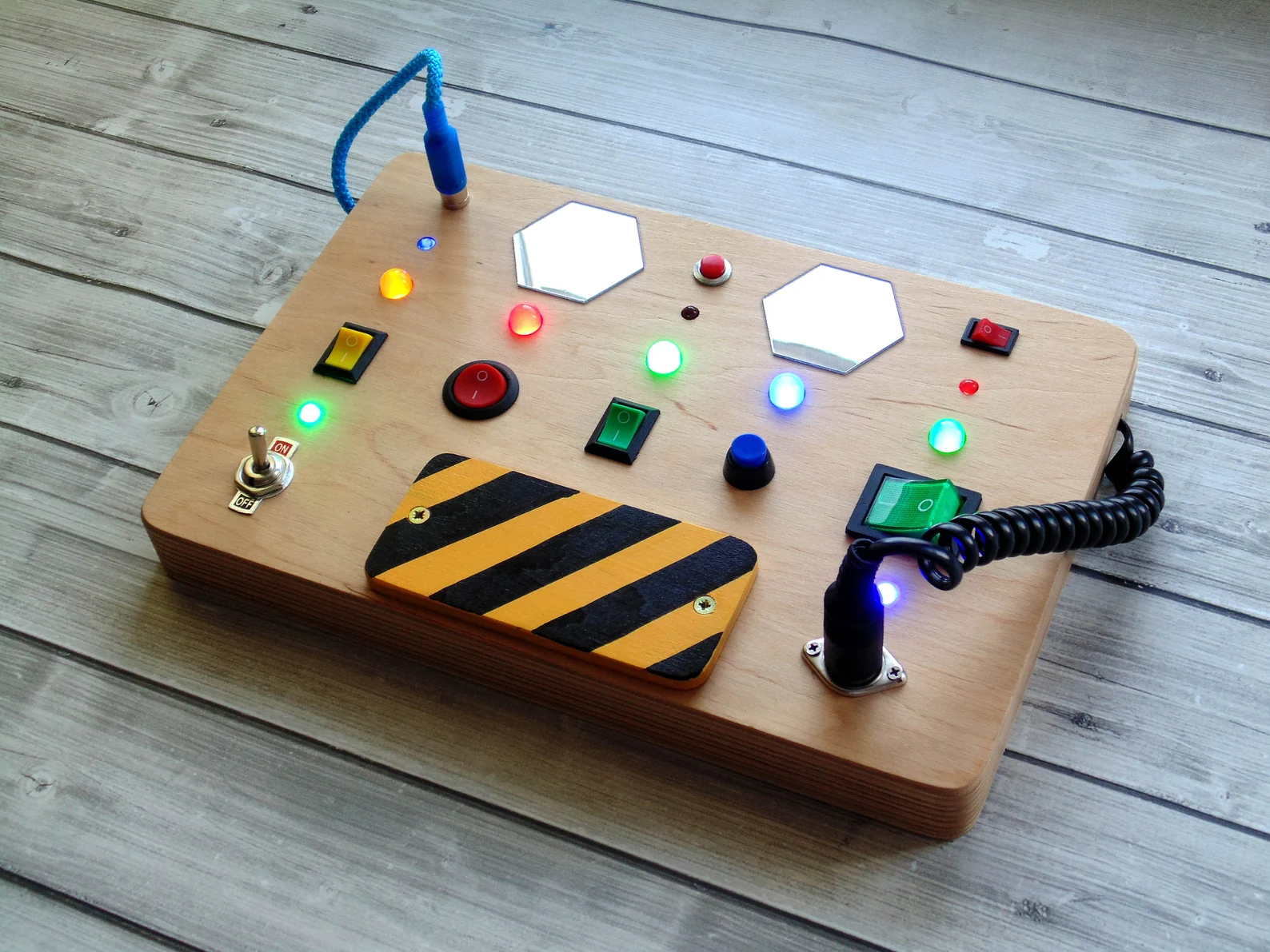Blog
What Kids Learn from Button and Switch Busy Boards: Key Skills Explained
Hey there, fellow parents and caregivers! Let’s chat about a gem in the world of early childhood development: button and switch busy boards. If you’ve ever found yourself buried under a pile of toys wondering which ones your little ones will actually benefit from, you’re in the right place. These boards are not just colorful distractions; they’re packed with learning opportunities that will make your child’s brain do a happy dance.

What Exactly Are Busy Boards?
Before we dive into the amazing things kids pick up from these boards, let’s quickly touch on what they are. Busy boards are simply boards outfitted with an array of buttons, switches, locks, and other interactive elements. They can be made from various materials and usually come in vibrant colors to catch a kid’s eye. These boards are designed to engage toddlers and preschoolers, giving them a hands-on way to explore and experiment with cause and effect.
But you might be wondering: “How do these simple activities translate into valuable skills for my child?” Well, let’s break it down!
- Fine Motor Skills: The Key to Hand Coordination
One of the biggest benefits of busy boards is the development of fine motor skills. For young children, mastering actions like pinching, grasping, and manipulating small objects is crucial. When your kiddo is pushing buttons, flipping switches, or turning knobs, they’re enhancing their dexterity in a fun way.
Fine motor skills are essential for daily tasks like buttoning shirts or tying shoelaces in the future. Your child can develop the foundational skills they’ll need to tackle these challenges head-on. Plus, they’re getting their hands moving and learning the coordination needed for more complex tasks down the line.
- Cognitive Skills: Cause and Effect
Ah, here’s where things get fascinating! These boards are like little laboratories for testing hypotheses. When your toddler presses a button and a light turns on, they instantly make that crucial cognitive connection: “I did that!” This basic cause-and-effect relationship is a fundamental cognitive skill.
Learning through play like this helps children process information, solve problems, and gradually grasp more complex concepts like sequencing or basic mathematics as they grow older. It’s amazing how a simple action can ignite a spark of curiosity and encourage more exploration.
- Sensory Exploration: Engaging Multiple Senses
Jumping from the cognitive to the sensory, busy boards are also fantastic for engaging a variety of senses. The textures of different buttons, the sounds when something is activated, and the visual stimuli of colors all contribute to a rich sensory experience. This multi-sensory exploration is essential for brain development and helps children learn to process sensory information.
>>>Read more: Unlock Your Child’s Motor Skills with a Fun Montessori Activity: Spooning

As your child interacts with the busy board, they learn to differentiate between sensations and refine their sensory processing. This is particularly important for toddlers who are still becoming accustomed to the world around them, helping them to develop a better understanding of their environment.
- Problem-Solving Skills: Puzzles in Disguise
Busy boards are undoubtedly great for fine motor development, but they’re also puzzles in disguise. Each button, switch, or latch presents a challenge that your child will endeavor to solve.
For instance, if they’re struggling to figure out which switch operates a particular feature, they’re practicing critical thinking and problem-solving skills. With each discovery, they learn patience, perseverance, and resilience. These are essential life skills that will serve them well as they face other challenges, both in school and beyond.
- Imagination and Creativity: The Building Blocks of Play
While the educational aspects are important, let’s not forget about the free play that busy boards encourage. Children aren’t just learning specific skills; they’re also exercising their imagination. As they push, pull, and twist, they can create entire worlds in their minds.
This imaginative play is essential for cognitive development and can help foster creativity. So whether they are pretending that a button is a spaceship control or that a switch is a light in a fairy house, they’re engaging in a fun act of storytelling that fuels their imagination.

- Social Skills: Collaboration and Communication
Last but not least, busy boards can be excellent for promoting social skills, especially in group settings or among siblings. When kids gather around a busy board, they practice taking turns, sharing, and communicating their discoveries.
Engaging with peers can teach them how to express themselves verbally and socially, which is just as crucial as individual skill development. These collaborative play experiences can also foster empathy as they learn to recognize the feelings and needs of their friends.
Wrapping It All Up!
So, there you have it—the hidden treasures packed in button and switch busy boards! These multifunctional toys are so much more than just shiny pieces of plastic; they’re an incredible resource for children to develop fine motor skills, cognitive abilities, sensory processing, problem-solving skills, creativity, and social interaction.
Next time you see your child immersed in their busy board, remember: they’re not just playing; they’re learning in a meaningful way. By allowing them to explore these interactive stations, you’re opening up a world of potential that lays the groundwork for successful learning and growth.
So let’s celebrate the magic of busy boards and keep encouraging our little ones to explore, experiment, and most importantly—have fun!
